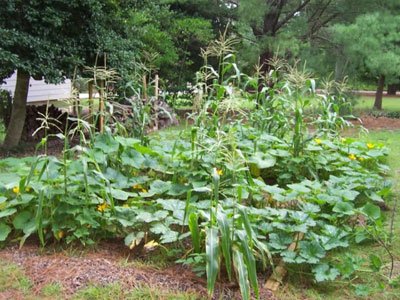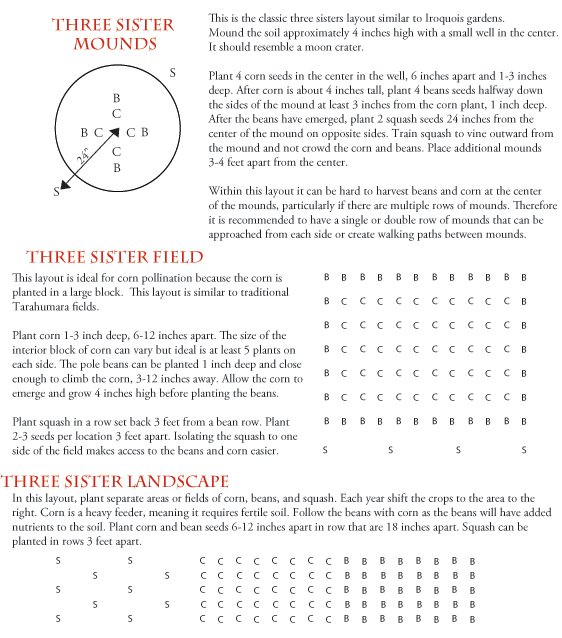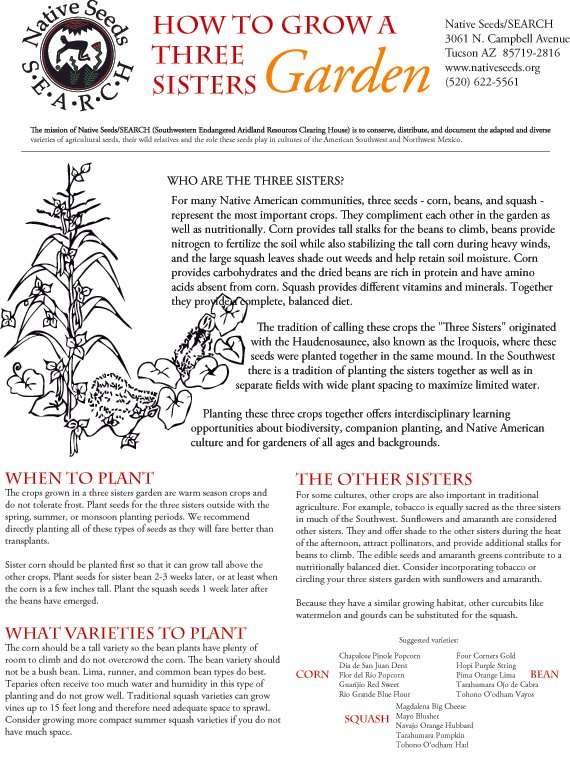
Background --
The three sisters is a name given to a gardening method used agriculturally by Native Americans, the three plants involved in this method are: corn, (climbing/pole) beans/peas, and squash. This method utilizes every plant as a companion to the others and thus can self-sustain if done properly, and watered! The three sisters are often planted upon a flat-topped mound of soil, the method itself could be one of the earliest gardening strategies known! The earliest use may be around 3,500 years ago!
The corn is in place for a central climbing medium at the center of the flattened mound with beans surrounding the corn and squash on the outside of the mound. Corn is planted first and allowed 2-3 weeks to grow to have a solid base for the legumes to climb, then the legumes are sown and allowed 1 week after they emerge from the soil till the squash is planted.

(https://www.nativeseeds.org/learn/nss-blog/415-3sisters)
Alternative Sisters --
Other alternatives include:
- Sunflowers - excellent support for climbing legumes, attracts pollinators.
- Amaranth - edible seeds (ancient grain), can add some color if seeking the purple/red/orange varieties.
- Tobacco - traditional sacrament of Native Americans, smokable/natural. (Not condoning)
- Cucurbits - Other close relatives to the squash could include pumpkins, watermelon, or cucumbers!
Theory --
The corn stands as a climbing stalk for the beans, and the squash provide ground cover which shades out many unwanted plants with its large leaves and thick creeping vine. The leguminous crops ( beans/peas) provide nitrogen-fixation to the others and maximize growing space by attaching to the corn and growing upward. The efficiency of this method is incredible if you can get the spacing and mounds tight enough to squeeze out other plants, but spacious enough to fit more plots and crops into!

(https://www.nativeseeds.org/learn/nss-blog/415-3sisters)
Thoughts --
I believe that this methods has been tried and true for the duration of its existence, this practice is most likely what helped colonialists survive rough winters after being shown this along with animal/fish fertilizers by the Native Americans (burying dead fish beneath the mound) due to the large amount of production in such a tight space.
Other thoughts I should lend to this method are that there can be potential additives in terms of higher production. If one was to take into account the subsurface soil layer, one could potentially see a benefit to adding root crops such as peanuts, potatoes or other tubers and root storage plants. I believe that could increase total output as long as it is thought through thoroughly. Planting peanuts would most likely coincide with the other leguminous plants sowing, as will with potatoes being considered more ground-cover and evenly spaced around the mounds to replicate/companion grow alongside the squash. Apparently after looking up companion info on squash/potatoes they are not true companions, so perhaps peanuts or another ground legume/local root storage plants could take the place of this, or if you wanted to add another more exterior layer a ways away from the squash!
Thanks for reading and following!
All pictures for educational purpose and do not belong to me.
Sources:
https://www.nativeseeds.org/learn/nss-blog/415-3sisters
https://www.almanac.com/content/three-sisters-corn-bean-and-squash
